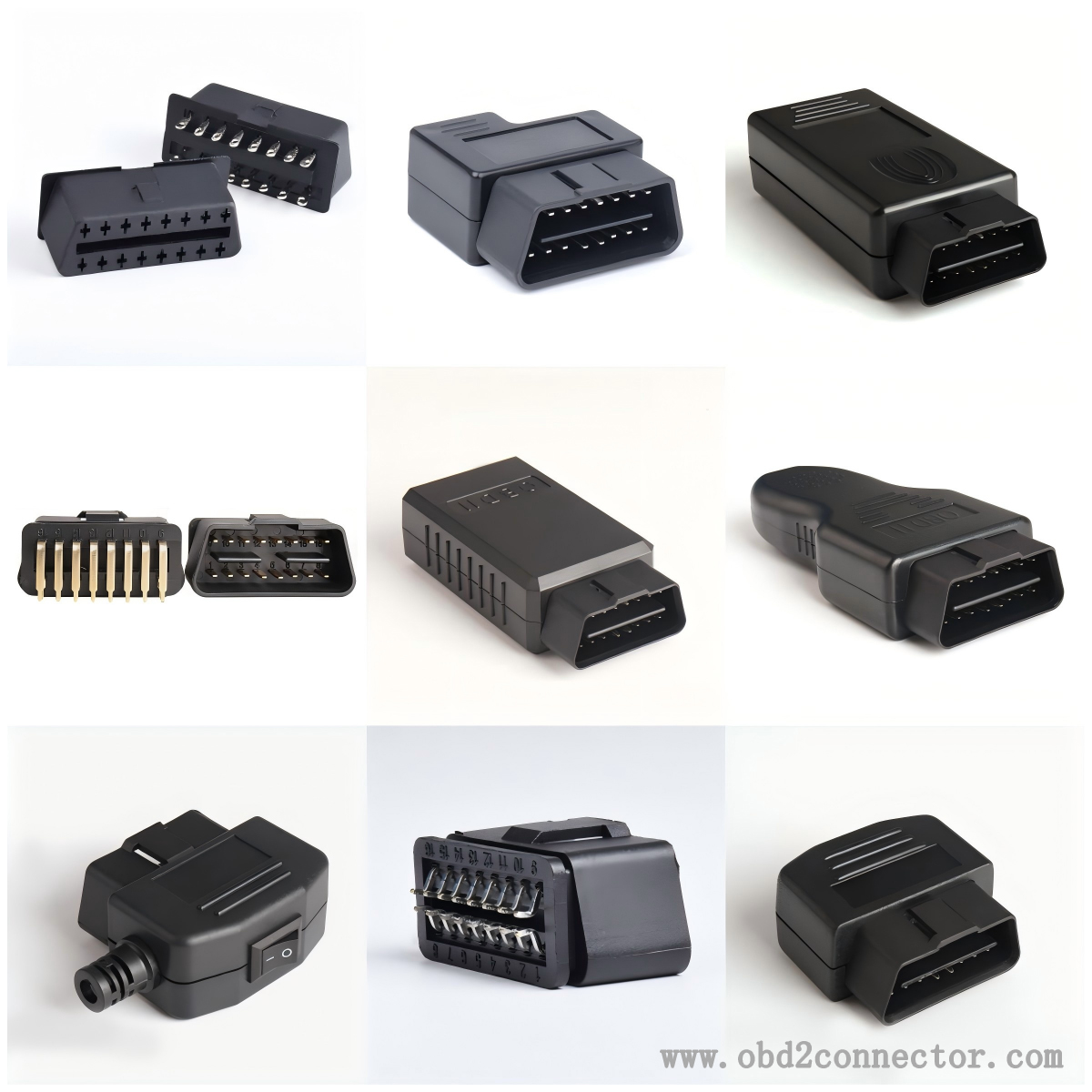Method for determining whether the OBD2 connector is damaged
Here are some methods to determine if the OBD2 connector is damaged:
VISUAL INSPECTION
Check for cracks, damages, or deformations in the connector housing, which may cause poor internal pin contact or short circuits.
Check if the pins are bent, broken, rusted, or corroded. Pin deformation may result in poor connection with diagnostic equipment, while rust or corrosion can affect signal transmission.
Connection testing
Connect the diagnostic device to the OBD2 connector and observe if the connection is secure. If the connector is loose, it may not be able to transmit data properly. It is necessary to check whether the buckle of the connector is damaged and whether the internal elastic contact piece has lost its elasticity.
If the diagnostic device cannot recognize the vehicle or establish communication after connection, you can try unplugging the connector again to see if the problem can be solved. If communication cannot be established after multiple attempts, it may be due to a faulty connector.

Electrical Test
Use a multimeter to measure the voltage between the power pin and ground pin of the connector. Under normal circumstances, the voltage of the vehicle battery should be measurable. If the voltage is abnormal, it may be due to a broken or short circuit in the internal wiring of the connector, or a problem with the vehicle's power system.
Check the resistance value and signal waveform of the communication pins. Different communication protocols have different standard resistance values and signal characteristics, which can be compared with relevant data in the vehicle maintenance manual. If the resistance value is abnormal or the signal waveform does not meet the standard, it indicates that there may be a fault in the communication line of the connector.
Troubleshooting
If the vehicle shows a fault prompt, but the diagnostic equipment cannot read the accurate fault code through the OBD2 connector, after ruling out the possibility of diagnostic equipment and other system faults in the vehicle, it can be suspected that there is a problem with the OBD2 connector.
Compare the working condition of OBD2 connectors in normal vehicles of the same model. If under the same conditions, the connectors of other vehicles can communicate with the diagnostic equipment normally, but the connector of the tested vehicle cannot work properly, it is likely that the connector is damaged.
If there is suspicion of damage to the OBD2 connector, it is recommended to have professional car maintenance personnel conduct further inspection and repair to ensure accurate determination of the cause of the fault and effective repair.